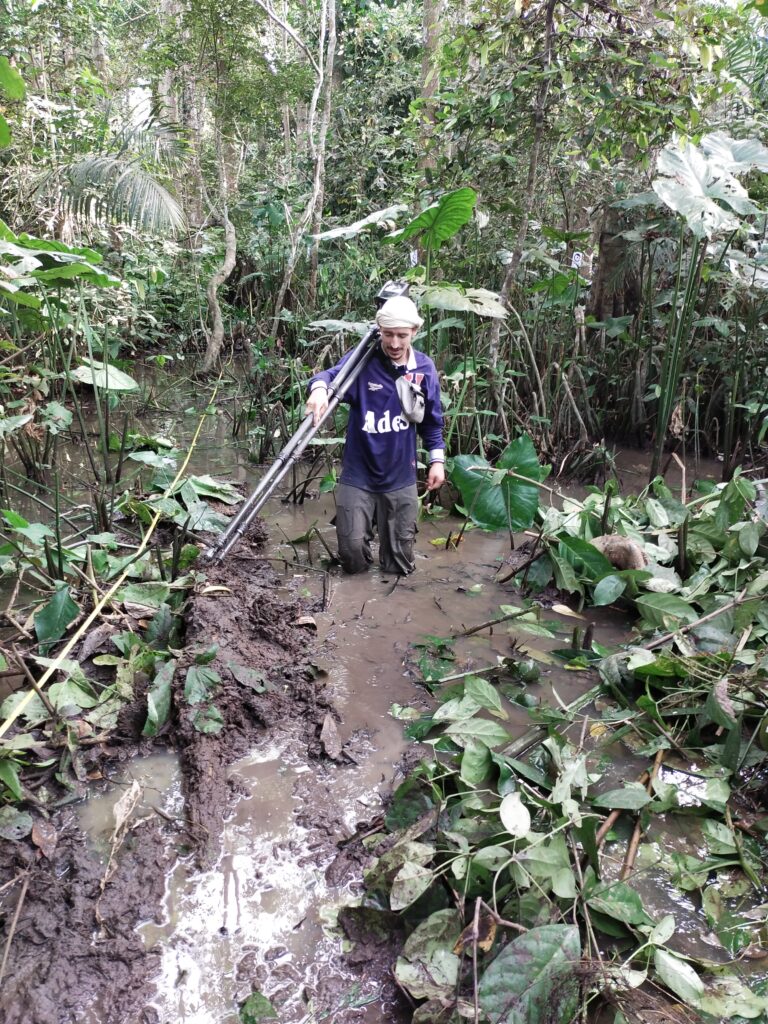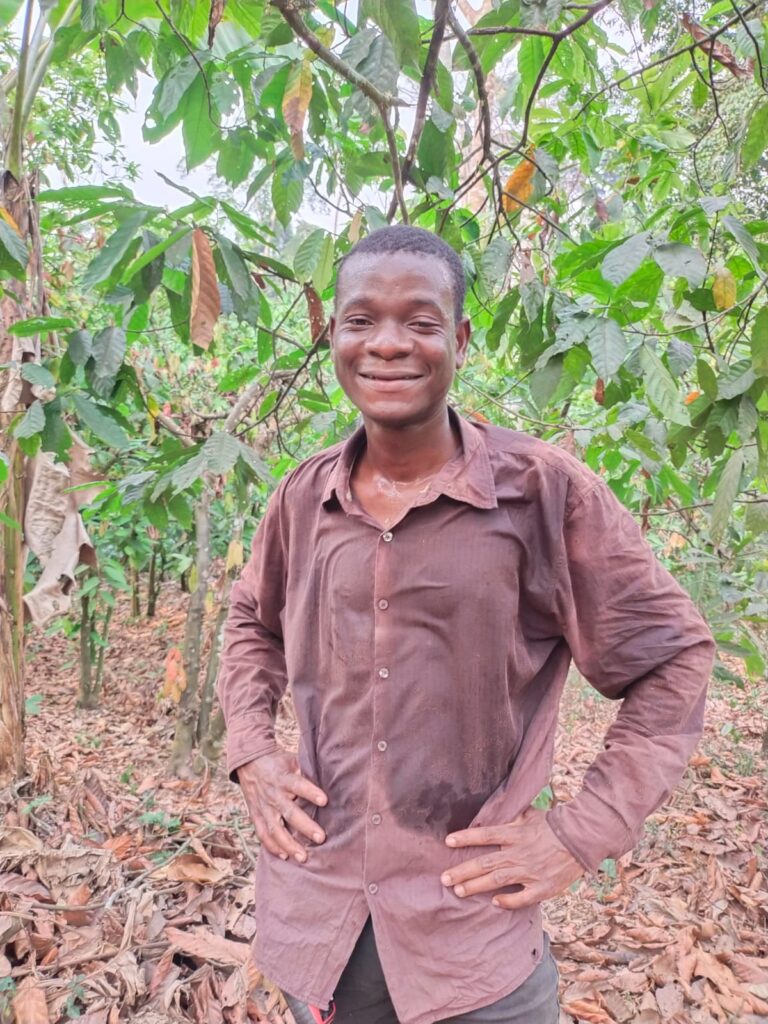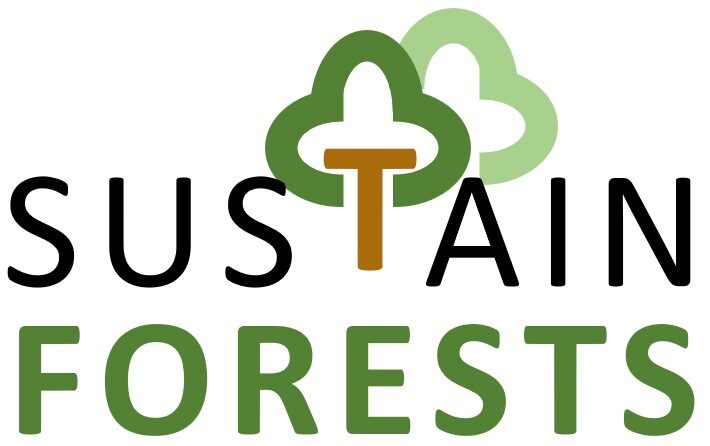PhD project 1: The ecology and conservation of forest patches in West Africa – tree species richness and aboveground biomass
Samuel Hepner
Tropical forests are being cleared worldwide; in West Africa in particular, deforestation is taking place at an alarming rate. However, deforestation is often incomplete, and forest patches remain unprotected in the agricultural landscape. It is unclear why these forest patches persist, resisting disturbances like land use change, climate change or forest fires. Aboveground biomass (AGB) is an important indicator of the integrity of a forest. It mirrors the disturbances, the resilience, and the type of forest management, and it is particularly relevant regarding the carbon cycle and global warming. The amount of AGB held in a forest is the result of a complex interplay of social, environmental, spatial and allometric factors and the sustainability of the management. Global AGB estimates have a coarse spatial resolution and the limited ground-truthing makes them inaccurate for small-scale forest patches. Plot-based case studies focus mainly on large, protected forest reserves and are rare in West Africa.
Therefore, this study addresses the fundamental lack of knowledge concerning AGB of small forest patches in Togo, Benin, Nigeria, and Cameroon. A systematic literature review, quantitative forest inventories and qualitative surveys aim to disentangle the complexity of the interlinked factors. I expect that the AGB of forest patches depends mainly on human management. The knowledge generated from this understudied topic and the awareness raised of the unprotected forest patches of West Africa are important steps towards thorough landscape planning and sustainable management implementations in policies. Preserving forests and their associated biodiversity is an important and low-cost climate change mitigation strategy.
Keywords
Forest patch, aboveground biomass, tree species, West Africa, sacred forests, forest inventory, social-ecological drivers

PhD prject 2
There is an increasing threat to global biodiversity. Trees play a pivotal role in maintaining ecosystems, and supporting diverse life forms and human livelihoods. However, one-third of the world’s tree species are threatened with extinction. To avert the biodiversity crisis, conservation areas, including unprotected forest patches, require effective management. While many studies have assessed the impact of disturbances on species populations (autecology), few have delved into the effects on tree communities (synecology). Moreover, there is a notable dearth of research on the impact of anthropogenic disturbances on tree communities in forest patches, particularly in West Africa where these patches are managed by local communities. This study aims to advance our understanding of the ecological characteristics of tree communities in West African forest patches and their contribution to biodiversity conservation in a human-modified landscape. Three objectives have been proposed: 1) to review the state of knowledge regarding tree community responses to disturbances in tropical forests and the methods applied; 2) to assess the effects of anthropogenic disturbances on tree community conservation in forest patches and 3) to analyse the resilience and functional traits variation among tree communities in forest patches. A set of hypotheses are proposed. For the first objective, it is expected that i) tree community responses to disturbances vary with the environmental conditions (e.g. climate, soil); ii) theoretical frameworks applied in the last two decades have limited application in African ecosystems. For objective 2, it is hypothesised that i) the diversity in tree communities decreases with the richness and density of exotic tree species in forest patches; ii) tree species richness, abundance and basal area in forest patches are positively correlated with the vegetation cover rather than the forest size and iii) tree regeneration (sapling) density is negatively correlated with the disturbance gradient. For the third objective, it is assumed that i) Climatic variables act as ecological filters leading to trait specialisation in forest patches, and the patch level variables are correlated to the functional diversity; ii) landscape variables driven by anthropogenic disturbances influence the tree regeneration assemblage. Fieldwork data will be collected in forest patches located in West Africa (Togo, Benin, Nigeria and Cameroon) within the Guineo-Congolian and the Guinea-Congolia/Sudania phytochoria. Plots of 2,500 m2 will be used to assess the tree species’ composition and their natural regeneration. Alpha and beta diversity indexes, tree diameter and height will be used to assess the forest diversity and structure. The disturbance index will be used to quantify the disturbances in each forest. Plant functional traits data will be extracted from the TRY database and used to analyse the tree community assembly patterns. The functional diversity and functional redundancy will be measured for both adult trees and regenerations to explain the resilience of tree communities among forest patches. This study will provide ecological knowledge for a sustainable management of tree communities in the forest patches.
Keywords: Forest patches, tree communities, disturbances, resilience, functional traits

